Advanced Waveguide Based LOC Biosensors: A Minireview
Abstract
:1. Introduction
2. Fundamental Principles and Designing of Micro-Optic Components and Production
Infrared Spectroscopy and Clinical Discovery
3. Discussion
3.1. First-Edition MI Waveguides
3.2. Second-Edition MI Waveguides
3.3. Third-Edition MI Waveguides
4. The Significance of Thin-Film Waveguides
4.1. Thin-Film Waveguides
4.2. Advanced Technology of Thin-Film MIR Waveguides
4.3. GaAs/AlGaAs Waveguides
4.4. Silicon-On-Sapphire (SOS) Waveguides
4.5. Diamond Waveguides
4.6. Chalcogenides
4.7. Germanium Waveguides
4.8. HgCdTe Waveguides
4.9. Silver Halides
4.10. Advantages
4.11. Disease Diagnostics with MIR Thin-Film Waveguides
5. MIR Established Lab-On-A-Chip
5.1. Graphene as a Lab-On-Chip Material
5.2. Incorporation of Graphene into Waveguides
5.3. Graphene as a Biosensor
6. Summary and Future Perspectives
Funding
Institutional Review Board Statement
Informed Consent Statement
Data Availability Statement
Acknowledgments
Conflicts of Interest
References
- Parachalil, D.R.; Bruno, C.; Bonnier, F.; Blasco, H.; Chourpa, I.; Baker, M.J.; McIntyre, J.; Byrne, H.J. Analysis of bodily fluids using vibrational spectroscopy: A direct comparison of Raman scattering and infrared absorption techniques for the case of glucose in blood serum. Analyst 2019, 144, 3334–3346. [Google Scholar] [CrossRef]
- Mittal, V.; Mashanovich, G.Z.; Wilkinson, J.S. Perspective on Thin Film Waveguides for on-Chip Mid-Infrared Spectroscopy of Liquid Biochemical Analytes. Anal. Chem. 2020, 92, 10891–10901. [Google Scholar] [CrossRef]
- Fahrenfort, J. Attenuated total reflection: A new principle for the production of useful infra-red reflection spectra of organic compounds. Mol. Spectrosc. 1989, 45 (Suppl. S41), 251–263. [Google Scholar]
- Harrick, N.J.; Beckmann, K.H. Internal Reflection Spectroscopy. In Characterization of Solid Surfaces; Kane, P.F., Larrabee, G.B., Eds.; Springer: Boston, MA, USA, 1974; pp. 215–245. [Google Scholar]
- Mizaikoff, B. Peer Reviewed: Mid-IR Fiber-Optic Sensors. Anal. Chem. 2003, 75, 258A–267A. [Google Scholar] [CrossRef] [PubMed] [Green Version]
- Perez-Guaita, D.; Kokoric, V.; Wilk, A.; Garrigues, S.; Mizaikoff, B. Towards the determination of isoprene in human breath using substrate-integrated hollow waveguide mid-infrared sensors. J. Breath Res. 2014, 8, 026003. [Google Scholar] [CrossRef] [PubMed]
- Hou, S.; Riley, C.B.; Mitchell, C.A.; Shaw, R.A.; Bryanton, J.; Bigsby, K.; McClure, J.T. Exploration of attenuated total reflectance mid-infrared spectroscopy and multivariate calibration to measure immunoglobulin G in human sera. Talanta 2015, 142, 110–119. [Google Scholar] [CrossRef] [PubMed]
- Maltesen, M.J.; Bjerregaard, S.; Hovgaard, L.; Havelund, S.; van de Weert, M.; Grohganz, H. Multivariate analysis of phenol in freeze-dried and spray-dried insulin formulations by NIR and FTIR. AAPS PharmSciTech 2011, 12, 627–636. [Google Scholar] [CrossRef] [PubMed] [Green Version]
- Willer, U.; Saraji, M.; Khorsandi, A.; Geiser, P.; Schade, W. Near- and mid-infrared laser monitoring of industrial processes, environment and security applications. Opt. Lasers Eng. 2006, 44, 699–710. [Google Scholar] [CrossRef]
- Schaden, S.; Haberkorn, M.; Frank, J.; Baena, J.R.; Lendl, B. Direct Determination of Carbon Dioxide in Aqueous Solution Using Mid-Infrared Quantum Cascade Lasers. Appl. Spectrosc. 2004, 58, 667–670. [Google Scholar] [CrossRef] [PubMed]
- Orghici, R.; Willer, U.; Gierszewska, M.; Waldvogel, S.R.; Schade, W. Fiber optic evanescent field sensor for detection of explosives and CO2 dissolved in water. Appl. Phys. B 2008, 90, 355–360. [Google Scholar] [CrossRef]
- Charlton, C.; Giovannini, M.; Faist, J.; Mizaikoff, B. Fabrication and Characterization of Molecular Beam Epitaxy Grown Thin-Film GaAs Waveguides for Mid-Infrared Evanescent Field Chemical Sensing. Anal. Chem. 2006, 78, 4224–4227. [Google Scholar] [CrossRef] [PubMed]
- Schädle, T.; Eifert, A.; Kranz, C.; Raichlin, Y.; Katzir, A.; Mizaikoff, B. Mid-infrared planar silver halide waveguides with integrated grating couplers. Appl. Spectrosc. 2013, 67, 1057–1063. [Google Scholar] [CrossRef]
- Li, W.; Anantha, P.; Lee, K.H.; Qiu, H.D.; Guo, X.; Goh, S.C.K.; Zhang, L.; Wang, H.; Soref, R.A.; Tan, C.S. Spiral waveguides on germanium-on-silicon nitride platform for mid-IR sensing applications. IEEE Photonics J. 2018, 10, 1–7. [Google Scholar] [CrossRef]
- Qi, Y.; Rowe, D.J.; Mittal, V.; Banakar, M.; Wu, Y.; Nedeljkovic, M.; Wilkinson, J.S.; Mashanovich, G.Z. Integration of mid-infrared SOI photonics with microfluidics. In Proceedings of the Silicon Photonics XIV, San Francisco, CA, USA, 2–7 February 2019; International Society for Optics and Photonics: Bellingham, WA, USA, 2019; p. 109230I. [Google Scholar]
- Chen, M.; Sheng, P.; Sun, W.; Cai, J. A symmetric terahertz graphene-based hybrid plasmonic waveguide. Opt. Commun. 2016, 376, 41–46. [Google Scholar] [CrossRef]
- Kovacevic, G.; Yamashita, S. Waveguide design parameters impact on absorption in graphene coated silicon photonic integrated circuits. Opt. Express 2016, 24, 3584–3591. [Google Scholar] [CrossRef]
- Kou, R.; Tanabe, S.; Tsuchizawa, T.; Warabi, K.; Suzuki, S.; Hibino, H.; Nakajima, H.; Yamada, K. Characterization of optical absorption and polarization dependence of single-layer graphene integrated on a silicon wire waveguide. Jpn. J. Appl. Phys. 2013, 52, 060203. [Google Scholar] [CrossRef]
- Schuler, S.; Schall, D.; Neumaier, D.; Dobusch, L.; Bethge, O.; Schwarz, B.; Krall, M.; Mueller, T. Controlled generation of ap–n junction in a waveguide integrated graphene photodetector. Nano Lett. 2016, 16, 7107–7112. [Google Scholar] [CrossRef] [Green Version]
- Mittendorff, M.; Li, S.; Murphy, T.E. Graphene-based waveguide-integrated terahertz modulator. ACS Photonics 2017, 4, 316–321. [Google Scholar] [CrossRef]
- Shiue, R.-J.; Gao, Y.; Wang, Y.; Peng, C.; Robertson, A.D.; Efetov, D.K.; Assefa, S.; Koppens, F.H.; Hone, J.; Englund, D. High-responsivity graphene–boron nitride photodetector and autocorrelator in a silicon photonic integrated circuit. Nano Lett. 2015, 15, 7288–7293. [Google Scholar] [CrossRef] [Green Version]
- Ooi, K.J.A.; Leong, P.C.; Ang, L.K.; Tan, D.T. All-optical control on a graphene-on-silicon waveguide modulator. Sci. Rep. 2017, 7, 12748. [Google Scholar] [CrossRef] [Green Version]
- Zhou, H.; Hui, X.; Li, D.; Hu, D.; Chen, X.; He, X.; Gao, L.; Huang, H.; Lee, C.; Mu, X. Metal–Organic Framework-Surface-Enhanced Infrared Absorption Platform Enables Simultaneous On-Chip Sensing of Greenhouse Gases. Adv. Sci. 2020, 7, 2001173. [Google Scholar] [CrossRef] [PubMed]
- Chen, Y.; Fegadolli, W.S.; Jones, W.M.; Scherer, A.; Li, M. Ultrasensitive Gas-Phase Chemical Sensing Based on Functionalized Photonic Crystal Nanobeam Cavities. ACS Nano 2014, 8, 522–527. [Google Scholar] [CrossRef] [PubMed]
- Chang, Y.; Wei, J.; Lee, C. Metamaterials—From fundamentals and MEMS tuning mechanisms to applications. Nanophotonics 2020, 9, 3049–3070. [Google Scholar] [CrossRef]
- Lin, H.; Song, Y.; Huang, Y.; Kita, D.; Deckoff-Jones, S.; Wang, K.; Li, L.; Li, J.; Zheng, H.; Luo, Z.; et al. Chalcogenide glass-on-graphene photonics. Nat. Photonics 2017, 11, 798–805. [Google Scholar] [CrossRef] [Green Version]
- Mittal, V.; Nedeljkovic, M.; Rowe, D.J.; Murugan, G.S.; Wilkinson, J.S. Chalcogenide glass waveguides with paper-based fluidics for mid-infrared absorption spectroscopy. Opt. Lett. 2018, 43, 2913–2916. [Google Scholar] [CrossRef]
- Ren, Z.; Chang, Y.; Ma, Y.; Shih, K.; Dong, B.; Lee, C. Leveraging of MEMS Technologies for Optical Metamaterials Applications. Adv. Opt. Mater. 2020, 8, 1900653. [Google Scholar] [CrossRef]
- Xu, J.; Du, Y.; Tian, Y.; Wang, C. Progress in wafer bonding technology towards MEMS, high-power electronics, optoelectronics, and optofluidics. Int. J. Optomechatronics 2020, 14, 94–118. [Google Scholar] [CrossRef]
- Xu, J.; Ren, Z.; Dong, B.; Liu, X.; Wang, C.; Tian, Y.; Lee, C. Nanometer-Scale Heterogeneous Interfacial Sapphire Wafer Bonding for Enabling Plasmonic-Enhanced Nanofluidic Mid-Infrared Spectroscopy. ACS Nano 2020, 14, 12159–12172. [Google Scholar] [CrossRef]
- Lin, H.; Luo, Z.; Gu, T.; Kimerling, L.C.; Wada, K.; Agarwal, A.; Hu, J. Mid-infrared integrated photonics on silicon: A perspective. Nanophotonics 2018, 7, 393–420. [Google Scholar] [CrossRef]
- Wei, J.; Ren, Z.; Lee, C. Metamaterial technologies for miniaturized infrared spectroscopy: Light sources, sensors, filters, detectors, and integration. J. Appl. Phys. 2020, 128, 240901. [Google Scholar] [CrossRef]
- Ma, Y.; Dong, B.; Wei, J.; Chang, Y.; Huang, L.; Ang, K.-W.; Lee, C. High-Responsivity Mid-Infrared Black Phosphorus Slow Light Waveguide Photodetector. Adv. Opt. Mater. 2020, 8, 2000337. [Google Scholar] [CrossRef]
- Dong, B.; Yang, Y.; Shi, Q.; Xu, S.; Sun, Z.; Zhu, S.; Zhang, Z.; Kwong, D.-L.; Zhou, G.; Ang, K.-W.; et al. Wearable Triboelectric–Human–Machine Interface (THMI) Using Robust Nanophotonic Readout. ACS Nano 2020, 14, 8915–8930. [Google Scholar] [CrossRef] [PubMed]
- Dong, B.; Shi, Q.; He, T.; Zhu, S.; Zhang, Z.; Sun, Z.; Ma, Y.; Kwong, D.-L.; Lee, C. Wearable Triboelectric/Aluminum Nitride Nano-Energy-Nano-System with Self-Sustainable Photonic Modulation and Continuous Force Sensing. Adv. Sci. 2020, 7, 1903636. [Google Scholar] [CrossRef] [PubMed]
- Ramirez, J.M.; Vakarin, V.; Gilles, C.; Frigerio, J.; Ballabio, A.; Chaisakul, P.; Roux, X.L.; Alonso-Ramos, C.; Maisons, G.; Vivien, L.; et al. Low-loss Ge-rich Si0.2Ge0.8 waveguides for mid-infrared photonics. Opt. Lett. 2017, 42, 105–108. [Google Scholar] [CrossRef] [PubMed] [Green Version]
- Chen, Y.; Lin, H.; Hu, J.; Li, M. Heterogeneously Integrated Silicon Photonics for the Mid-Infrared and Spectroscopic Sensing. ACS Nano 2014, 8, 6955–6961. [Google Scholar] [CrossRef] [Green Version]
- Jin, T.; Zhou, J.; Lin, H.-Y.G.; Lin, P.T. Mid-Infrared Chalcogenide Waveguides for Real-Time and Nondestructive Volatile Organic Compound Detection. Anal. Chem. 2019, 91, 817–822. [Google Scholar] [CrossRef]
- Lin, P.T.; Kwok, S.W.; Lin, H.-Y.G.; Singh, V.; Kimerling, L.C.; Whitesides, G.M.; Agarwal, A. Mid-Infrared Spectrometer Using Opto-Nanofluidic Slot-Waveguide for Label-Free On-Chip Chemical Sensing. Nano Lett. 2014, 14, 231–238. [Google Scholar] [CrossRef]
- Gutierrez-Arroyo, A.; Baudet, E.; Bodiou, L.; Lemaitre, J.; Hardy, I.; Faijan, F.; Bureau, B.; Nazabal, V.; Charrier, J. Optical characterization at 7.7 µm of an integrated platform based on chalcogenide waveguides for sensing applications in the mid-infrared. Opt. Express 2016, 24, 23109–23117. [Google Scholar] [CrossRef]
- Benéitez, N.T.; Baumgartner, B.; Missinne, J.; Radosavljevic, S.; Wacht, D.; Hugger, S.; Leszcz, P.; Lendl, B.; Roelkens, G. Mid-IR sensing platform for trace analysis in aqueous solutions based on a germanium-on-silicon waveguide chip with a mesoporous silica coating for analyte enrichment. Opt. Express 2020, 28, 27013–27027. [Google Scholar] [CrossRef]
- Hu, T.; Dong, B.; Luo, X.; Liow, T.-Y.; Song, J.; Lee, C.; Lo, G.-Q. Silicon photonic platforms for mid-infrared applications [Invited]. Photonics Res. 2017, 5, 417–430. [Google Scholar] [CrossRef] [Green Version]
- Chang, Y.; Dong, B.; Ma, Y.; Wei, J.; Ren, Z.; Lee, C. Vernier effect-based tunable mid-infrared sensor using silicon-on-insulator cascaded rings. Opt. Express 2020, 28, 6251–6260. [Google Scholar] [CrossRef] [PubMed]
- Kozak, D.A.; Stievater, T.H.; Mahon, R.; Rabinovich, W.S. Germanium-on-Silicon Waveguides at Wavelengths From 6.85 to 11.25 microns. IEEE J. Sel. Top. Quantum Electron. 2018, 24, 1–4. [Google Scholar] [CrossRef]
- Ma, Y.; Dong, B.; Li, B.; Ang, K.-W.; Lee, C. Dispersion engineering and thermo-optic tuning in mid-infrared photonic crystal slow light waveguides on silicon-on-insulator. Opt. Lett. 2018, 43, 5504–5507. [Google Scholar] [CrossRef] [PubMed]
- Penades, J.S.; Ortega-Moñux, A.; Nedeljkovic, M.; Wangüemert-Pérez, J.G.; Halir, R.; Khokhar, A.Z.; Alonso-Ramos, C.; Qu, Z.; Molina-Fernández, I.; Cheben, P.; et al. Suspended silicon mid-infrared waveguide devices with subwavelength grating metamaterial cladding. Opt. Express 2016, 24, 22908–22916. [Google Scholar] [CrossRef]
- Penadés, J.S.; Alonso-Ramos, C.; Khokhar, A.Z.; Nedeljkovic, M.; Boodhoo, L.A.; Ortega-Moñux, A.; Molina-Fernández, I.; Cheben, P.; Mashanovich, G.Z. Suspended SOI waveguide with sub-wavelength grating cladding for mid-infrared. Opt. Lett. 2014, 39, 5661–5664. [Google Scholar] [CrossRef] [Green Version]
- Penadés, J.S.; Sánchez-Postigo, A.; Nedeljkovic, M.; Ortega-Moñux, A.; Wangüemert-Pérez, J.G.; Xu, Y.; Halir, R.; Qu, Z.; Khokhar, A.Z.; Osman, A.; et al. Suspended silicon waveguides for long-wave infrared wavelengths. Opt. Lett. 2018, 43, 795–798. [Google Scholar] [CrossRef]
- Smith, C.J.; Shankar, R.; Laderer, M.; Frish, M.B.; Loncar, M.; Allen, M.G. Sensing nitrous oxide with QCL-coupled silicon-on-sapphire ring resonators. Opt. Express 2015, 23, 5491–5499. [Google Scholar] [CrossRef]
- Ranacher, C.; Consani, C.; Tortschanoff, A.; Jannesari, R.; Bergmeister, M.; Grille, T.; Jakoby, B. Mid-infrared absorption gas sensing using a silicon strip waveguide. Sens. Actuators A Phys. 2018, 277, 117–123. [Google Scholar] [CrossRef]
- Consani, C.; Ranacher, C.; Tortschanoff, A.; Grille, T.; Irsigler, P.; Jakoby, B. Mid-infrared photonic gas sensing using a silicon waveguide and an integrated emitter. Sens. Actuators B Chem. 2018, 274, 60–65. [Google Scholar] [CrossRef]
- Ottonello-Briano, F.; Errando-Herranz, C.; Rödjegård, H.; Martin, H.; Sohlström, H.; Gylfason, K.B. Carbon dioxide absorption spectroscopy with a mid-infrared silicon photonic waveguide. Opt. Lett. 2020, 45, 109–112. [Google Scholar] [CrossRef] [Green Version]
- Yazici, M.S.; Dong, B.; Hasan, D.; Sun, F.; Lee, C. Integration of MEMS IR detectors with MIR waveguides for sensing applications. Opt. Express 2020, 28, 11524–11537. [Google Scholar] [CrossRef] [PubMed]
- Zhao, H.; Baumgartner, B.; Raza, A.; Skirtach, A.; Lendl, B.; Baets, R. Multiplex volatile organic compound Raman sensing with nanophotonic slot waveguides functionalized with a mesoporous enrichment layer. Opt. Lett. 2020, 45, 447–450. [Google Scholar] [CrossRef]
- Antonacci, G.; Goyvaerts, J.; Zhao, H.; Baumgartner, B.; Lendl, B.; Baets, R. Ultra-sensitive refractive index gas sensor with functionalized silicon nitride photonic circuits. APL Photonics 2020, 5, 081301. [Google Scholar] [CrossRef]
- Zhang, Z.; Zhang, X.; Rajh, T.; Guha, S. Photonic microresonator based sensor for selective nitrate ion detection. Sens. Actuators B Chem. 2021, 328, 129027. [Google Scholar] [CrossRef]
- Tuerdi, G.; Kari, N.; Yan, Y.; Nizamidin, P.; Yimit, A. A Functionalized Tetrakis(4-Nitrophenyl)Porphyrin Film Optical Waveguide Sensor for Detection of H2S and Ethanediamine Gases. Sensors 2017, 17, 2717. [Google Scholar] [CrossRef] [Green Version]
- Low, T.; Chaves, A.; Caldwell, J.D.; Kumar, A.; Fang, N.X.; Avouris, P.; Heinz, T.F.; Guinea, F.; Martin-Moreno, L.; Koppens, F. Polaritons in layered two-dimensional materials. Nat. Mater. 2017, 16, 182–194. [Google Scholar] [CrossRef] [Green Version]
- Nemilentsau, A.; Low, T.; Hanson, G. Anisotropic 2D materials for tunable hyperbolic plasmonics. Phys. Rev. Lett. 2016, 116, 066804. [Google Scholar] [CrossRef] [Green Version]
- Nandamuri, G.; Roumimov, S.; Solanki, R. Chemical vapor deposition of graphene films. Nanotechnology 2010, 21, 145604. [Google Scholar] [CrossRef]
- de Arco, L.G.; Zhang, Y.; Schlenker, C.W.; Ryu, K.; Thompson, M.E.; Zhou, C. Continuous, highly flexible, and transparent graphene films by chemical vapor deposition for organic photovoltaics. ACS Nano 2010, 4, 2865–2873. [Google Scholar] [CrossRef]
- Mikhailov, S.A. Electromagnetic response of electrons in graphene: Non-linear effects. Phys. E Low-Dimens. Syst. Nanostructures 2008, 40, 2626–2629. [Google Scholar] [CrossRef]
- Zhu, H.; Liu, A.; Shan, F.; Yang, W.; Zhang, W.; Li, D.; Liu, J. One-step synthesis of graphene quantum dots from defective CVD graphene and their application in IGZO UV thin film phototransistor. Carbon 2016, 100, 201–207. [Google Scholar] [CrossRef]
- Swinehart, D.F. The beer-lambert law. J. Chem. Educ. 1962, 39, 333. [Google Scholar] [CrossRef]
- Rodríguez-Ruiz, I.; Ackermann, T.N.; Muñoz-Berbel, X.; Llobera, A. Photonic Lab-on-a-Chip: Integration of Optical Spectroscopy in Microfluidic Systems. Anal. Chem. 2016, 88, 6630–6637. [Google Scholar] [CrossRef] [Green Version]
- Kwan, A.; Dudley, J.; Lantz, E. Who really discovered Snell's law? Phys. World 2002, 15, 64. [Google Scholar] [CrossRef]
- Vila-Planas, J.; Fernández-Rosas, E.; Ibarlucea, B.; Demming, S.; Nogués, C.; Plaza, J.A.; Domínguez, C.; Büttgenbach, S.; Llobera, A. Cell analysis using a multiple internal reflection photonic lab-on-a-chip. Nat. Protoc. 2011, 6, 1642–1655. [Google Scholar] [CrossRef]
- Miller, L.M.; Dumas, P. Chemical imaging of biological tissue with synchrotron infrared light. Biochim. Biophys. Acta (BBA)-Biomembr. 2006, 1758, 846–857. [Google Scholar] [CrossRef] [Green Version]
- Dumas, P.; Miller, L. Biological and biomedical applications of synchrotron infrared microspectroscopy. J. Biol. Phys. 2003, 29, 201–218. [Google Scholar] [CrossRef]
- Araki, K.; Yagi, N.; Ikemoto, Y.; Yagi, H.; Choong, C.-J.; Hayakawa, H.; Beck, G.; Sumi, H.; Fujimura, H.; Moriwaki, T. Synchrotron FTIR micro-spectroscopy for structural analysis of Lewy bodies in the brain of Parkinson’s disease patients. Sci. Rep. 2015, 5, 17625. [Google Scholar] [CrossRef]
- Aboualizadeh, E.; Ranji, M.; Sorenson, C.M.; Sepehr, R.; Sheibani, N.; Hirschmugl, C.J. Retinal oxidative stress at the onset of diabetes determined by synchrotron FTIR widefield imaging: Towards diabetes pathogenesis. Analyst 2017, 142, 1061–1072. [Google Scholar] [CrossRef] [Green Version]
- Grzelak, M.; Wrobel, P.; Lankosz, M.; Stęgowski, Z.; Adamek, D.; Hesse, B.; Castillo-Michel, H. Diagnosis of ovarian tumour tissues by SR-FTIR spectroscopy: A pilot study. Spectrochim. Acta Part A Mol. Biomol. Spectrosc. 2018, 203, 48–55. [Google Scholar] [CrossRef]
- Lyng, F.; Gazi, E.; Gardner, P. Preparation of tissues and cells for infrared and Raman spectroscopy and imaging. In Biomedical Applications of Synchrotron Infrared Microspectroscopy, RSC Analytical Spectroscopy Monographs; Royal Society of Chemistry: Cambridge, UK, 2010; Volume 11, pp. 147–185. [Google Scholar]
- Buriankova, L.; Nadova, Z.; Jancura, D.; Refregiers, M.; Yousef, I.; Mikes, J.; Miskovsky, P. Synchrotron based Fourier-transform infrared microspectroscopy as sensitive technique for the detection of early apoptosis in U-87 MG cells. Laser Phys. Lett. 2010, 7, 613. [Google Scholar] [CrossRef] [Green Version]
- Dučić, T.; Ninkovic, M.; Martínez-Rovira, I.; Sperling, S.; Rohde, V.; Dimitrijević, D.; Mañas, G.V.J.; Vaccari, L.; Birarda, G.; Yousef, I. Live-Cell Synchrotron-Based FTIR Evaluation of Metabolic Compounds in Brain Glioblastoma Cell Lines after Riluzole Treatment. Anal. Chem. 2022, 94, 1932–1940. [Google Scholar] [CrossRef]
- Moss, D.; Mantsch, H.H.; Williams, G. Biomedical Applications of Synchrotron Infrared Microspectroscopy: A Practical Approach; Royal Society of Chemistry: Cambridge, UK, 2011. [Google Scholar]
- Finlayson, D.; Rinaldi, C.; Baker, M.J. Is Infrared Spectroscopy Ready for the Clinic? Anal. Chem. 2019, 91, 12117–12128. [Google Scholar] [CrossRef] [Green Version]
- Dučić, T.; Stamenković, S.; Lai, B.; Andjus, P.; Lučić, V. Multimodal Synchrotron Radiation Microscopy of Intact Astrocytes from the hSOD1 G93A Rat Model of Amyotrophic Lateral Sclerosis. Anal. Chem. 2019, 91, 1460–1471. [Google Scholar]
- Nakamura, T.; Kelly, J.G.; Trevisan, J.; Cooper, L.J.; Bentley, A.J.; Carmichael, P.L.; Scott, A.D.; Cotte, M.; Susini, J.; Martin-Hirsch, P.L. Microspectroscopy of spectral biomarkers associated with human corneal stem cells. Mol. Vis. 2010, 16, 359. [Google Scholar]
- Messica, A.; Greenstein, A.; Katzir, A. Theory of fiber-optic, evanescent-wave spectroscopy andsensors. Appl. Opt. 1996, 35, 2274–2284. [Google Scholar] [CrossRef]
- Bradshaw, J.T.; Mendes, S.B.; Armstrong, N.R.; Saavedra, S.S. Broadband coupling into a single-mode, electroactive integrated optical waveguide for spectroelectrochemical analysis of surface-confined redox couples. Anal. Chem. 2003, 75, 1080–1088. [Google Scholar] [CrossRef] [PubMed]
- Seddon, A.B.; Abdel-Moneim, N.S.; Zhang, L.; Pan, W.J.; Furniss, D.; Mellor, C.J.; Kohoutek, T.; Orava, J.; Wagner, T.; Benson, T.M. Mid-infrared integrated optics: Versatile hot embossing of mid-infrared glasses for on-chip planar waveguides for molecular sensing. Opt. Eng. 2014, 53, 071824. [Google Scholar] [CrossRef] [Green Version]
- Schädle, T.; Pejcic, B.; Myers, M.; Mizaikoff, B. Fingerprinting Oils in Water via Their Dissolved VOC Pattern Using Mid-Infrared Sensors. Anal. Chem. 2014, 86, 9512–9517. [Google Scholar] [CrossRef]
- Pejcic, B.; Boyd, L.; Myers, M.; Ross, A.; Raichlin, Y.; Katzir, A.; Lu, R.; Mizaikoff, B. Direct quantification of aromatic hydrocarbons in geochemical fluids with a mid-infrared attenuated total reflection sensor. Org. Geochem. 2013, 55, 63–71. [Google Scholar] [CrossRef]
- Kansiz, M.; Billman-Jacobe, H.; McNaughton, D. Quantitative determination of the biodegradable polymer poly (β-hydroxybutyrate) in a recombinant Escherichia coli strain by use of mid-infrared spectroscopy and multivariative statistics. Appl. Environ. Microbiol. 2000, 66, 3415–3420. [Google Scholar] [CrossRef] [PubMed] [Green Version]
- Mizaikoff, B. Peer Reviewed: Mid-IR Fiber-Optic Sensors; ACS Publications: Washington, DC, USA, 2003. [Google Scholar]
- Wang, X.; Kim, S.-S.; Roßbach, R.; Jetter, M.; Michler, P.; Mizaikoff, B. Ultra-sensitive mid-infrared evanescent field sensors combining thin-film strip waveguides with quantum cascade lasers. Analyst 2012, 137, 2322–2327. [Google Scholar] [CrossRef] [PubMed]
- Saleh, B.E.; Teich, M. Fundamentals of Photonics; John Wiley & Sons: Hoboken, NJ, USA, 1991; p. 313. [Google Scholar]
- Doerr, C.R.; Kogelnik, H. Dielectric waveguide theory. J. Lightwave Technol. 2008, 26, 1176–1187. [Google Scholar] [CrossRef]
- Sieger, M.; Mizaikoff, B. Toward on-Chip Mid-Infrared Sensors; ACS Publications: Washington, DC, USA, 2016. [Google Scholar]
- Sieger, M.; Balluff, F.; Wang, X.; Kim, S.-S.; Leidner, L.; Gauglitz, G.; Mizaikoff, B. On-chip integrated mid-infrared GaAs/AlGaAs Mach–Zehnder interferometer. Anal. Chem. 2013, 85, 3050–3052. [Google Scholar] [CrossRef]
- Prieto, F.; Sepúlveda, B.; Calle, A.; Llobera, A.; Domínguez, C.; Abad, A.; Montoya, A.; Lechuga, L.M. An integrated optical interferometric nanodevice based on silicon technology for biosensor applications. Nanotechnology 2003, 14, 907. [Google Scholar] [CrossRef]
- Ingenhoff, J.; Drapp, B.; Gauglitz, G. Biosensors using integrated optical devices. Fresenius’ J. Anal. Chem. 1993, 346, 580–583. [Google Scholar] [CrossRef]
- Yamada, K. Silicon Photonic Wire Waveguides: Fundamentals and Applications. In Silicon Photonics II; Springer: Berlin/Heidelberg, Germany, 2011; pp. 1–29. [Google Scholar]
- Shankar, R.; Bulu, I.; Lončar, M. Integrated high-quality factor silicon-on-sapphire ring resonators for the mid-infrared. Appl. Phys. Lett. 2013, 102, 051108. [Google Scholar] [CrossRef]
- Li, F.; Jackson, S.D.; Grillet, C.; Magi, E.; Hudson, D.; Madden, S.J.; Moghe, Y.; O’Brien, C.; Read, A.; Duvall, S.G. Low propagation loss silicon-on-sapphire waveguides for the mid-infrared. Opt. Express 2011, 19, 15212–15220. [Google Scholar] [CrossRef] [Green Version]
- Baehr-Jones, T.; Spott, A.; Ilic, R.; Spott, A.; Penkov, B.; Asher, W.; Hochberg, M. Silicon-on-sapphire integrated waveguides for the mid-infrared. Opt. Express 2010, 18, 12127–12135. [Google Scholar] [CrossRef] [Green Version]
- Muneeb, M.; Chen, X.; Verheyen, P.; Lepage, G.; Pathak, S.; Ryckeboer, E.; Malik, A.; Kuyken, B.; Nedeljkovic, M.; van Campenhout, J. Demonstration of Silicon-on-insulator mid-infrared spectrometers operating at 3.8 μm. Opt. Express 2013, 21, 11659–11669. [Google Scholar] [CrossRef] [Green Version]
- Liu, X.; Kuyken, B.; Roelkens, G.; Baets, R.; Osgood, R.M.; Green, W.M. Bridging the mid-infrared-to-telecom gap with silicon nanophotonic spectral translation. Nat. Photonics 2012, 6, 667–671. [Google Scholar] [CrossRef] [Green Version]
- Zlatanovic, S.; Park, J.S.; Moro, S.; Boggio, J.M.C.; Divliansky, I.B.; Alic, N.; Mookherjea, S.; Radic, S. Mid-infrared wavelength conversion in silicon waveguides using ultracompact telecom-band-derived pump source. Nat. Photonics 2010, 4, 561–564. [Google Scholar] [CrossRef]
- Kuyken, B.; Liu, X.; Osgood, R.M.; Baets, R.; Roelkens, G.; Green, W.M. Mid-infrared to telecom-band supercontinuum generation in highly nonlinear silicon-on-insulator wire waveguides. Opt. Express 2011, 19, 20172–20181. [Google Scholar] [CrossRef] [PubMed] [Green Version]
- Beveratos, A.; Kühn, S.; Brouri, R.; Gacoin, T.; Poizat, J.-P.; Grangier, P. Room temperature stable single-photon source, The European Physical Journal D-Atomic, Molecular. Opt. Plasma Phys. 2002, 18, 191–196. [Google Scholar]
- Bennett, C.H.; Brassard, G. An Update on Quantum Cryptography, Workshop on the Theory and Application of Cryptographic Techniques; Springer: Berlin/Heidelberg, Germany, 1984; pp. 475–480. [Google Scholar]
- Knill, E.; Laflamme, R.; Milburn, G.J. A scheme for efficient quantum computation with linear optics. Nature 2001, 409, 46–52. [Google Scholar] [CrossRef]
- Hill, P.; Gu, E.; Dawson, M.D.; Strain, M.J. Thin film diamond membranes bonded on-demand with SOI ring resonators. Diam. Relat. Mater. 2018, 88, 215–221. [Google Scholar] [CrossRef]
- Haas, J.; Catalán, E.V.; Piron, P.; Nikolajeff, F.; Österlund, L.; Karlsson, M.; Mizaikoff, B. Polycrystalline diamond thin-film waveguides for mid-infrared evanescent field sensors. ACS Omega 2018, 3, 6190–6198. [Google Scholar] [CrossRef]
- Feng, C.; Gen, X.; Xu, G.-P. Thermal residual stress of polycrystalline diamond compacts. Trans. Nonferrous Met. Soc. China 2010, 20, 227–232. [Google Scholar]
- Harker, A.B.; Howitt, D.; Chen, S.; Flintoff, J.F.; James, M. Residual Stress Measurements on Polycrystalline Diamond, Window and Dome Technologies and Materials IV. In Proceedings of the Symposium on Optics, Imaging, and Instrumentation, San Diego, CA, USA, 24–29 July 1994; International Society for Optics and Photonics: Bellingham, WA, USA, 1994; pp. 254–261. [Google Scholar]
- Mittal, V.; Aghajani, A.; Carpenter, L.G.; Gates, J.C.; Butement, J.; Smith, P.G.; Wilkinson, J.S.; Murugan, G.S. Fabrication and characterization of high-contrast mid-infrared GeTe 4 channel waveguides. Opt. Lett. 2015, 40, 2016–2019. [Google Scholar] [CrossRef] [Green Version]
- Plunkett, S.E.; Propst, S.; Braiman, M.S. Supported planar germanium waveguides for infrared evanescent-wave sensing. Appl. Opt. 1997, 36, 4055–4061. [Google Scholar] [CrossRef]
- Chang, Y.-C.; Paeder, V.; Hvozdara, L.; Hartmann, J.-M.; Herzig, H.P. Low-loss germanium strip waveguides on silicon for the mid-infrared. Opt. Lett. 2012, 37, 2883–2885. [Google Scholar] [CrossRef] [PubMed]
- Chang, Y.-C.; Wägli, P.; Paeder, V.; Homsy, A.; Hvozdara, L.; van der Wal, P.; di Francesco, J.; de Rooij, N.F.; Herzig, H.P. Cocaine detection by a mid-infrared waveguide integrated with a microfluidic chip. Lab Chip 2012, 12, 3020–3023. [Google Scholar] [CrossRef] [PubMed]
- Wägli, P.; Chang, Y.-C.; Homsy, A.; Hvozdara, L.; Herzig, H.P.; de Rooij, N.F. Microfluidic droplet-based liquid–liquid extraction and on-chip IR spectroscopy detection of cocaine in human saliva. Anal. Chem. 2013, 85, 7558–7565. [Google Scholar] [CrossRef]
- Charlton, C.; Katzir, A.; Mizaikoff, B. Infrared evanescent field sensing with quantum cascade lasers and planar silver halide waveguides. Anal. Chem. 2005, 77, 4398–4403. [Google Scholar] [CrossRef]
- Dekel, B.; Katzir, A. Silver halide planar waveguides and grating couplers for middle infrared integrated optics. Appl. Phys. Lett. 2010, 97, 241106. [Google Scholar] [CrossRef]
- Singh, N.; Casas-Bedoya, A.; Hudson, D.D.; Read, A.; Mägi, E.; Eggleton, B.J. Mid-IR absorption sensing of heavy water using a silicon-on-sapphire waveguide. Opt. Lett. 2016, 41, 5776–5779. [Google Scholar] [CrossRef] [PubMed]
- Lin, P.T.; Singh, V.; Lin, H.Y.G.; Tiwald, T.; Kimerling, L.C.; Agarwal, A.M. Low-Stress Silicon Nitride Platform for Mid-Infrared Broadband and Monolithically Integrated Microphotonics. Adv. Opt. Mater. 2013, 1, 732–739. [Google Scholar] [CrossRef]
- Kischkat, J.; Peters, S.; Gruska, B.; Semtsiv, M.; Chashnikova, M.; Klinkmüller, M.; Fedosenko, O.; Machulik, S.; Aleksandrova, A.; Monastyrskyi, G. Mid-infrared optical properties of thin films of aluminum oxide, titanium dioxide, silicon dioxide, aluminum nitride, and silicon nitride. Appl. Opt. 2012, 51, 6789–6798. [Google Scholar] [CrossRef]
- Soref, R.A.; Emelett, S.J.; Buchwald, W.R. Silicon waveguided components for the long-wave infrared region. J. Opt. A Pure Appl. Opt. 2006, 8, 840. [Google Scholar] [CrossRef] [Green Version]
- Wang, X.; Karlsson, M.; Forsberg, P.; Sieger, M.; Nikolajeff, F.; Österlund, L.; Mizaikoff, B. Diamonds are a spectroscopist’s best friend: Thin-film diamond mid-infrared waveguides for advanced chemical sensors/biosensors. Anal. Chem. 2014, 86, 8136–8141. [Google Scholar] [CrossRef]
- Ataka, K.; Stripp, S.T.; Heberle, J. Surface-enhanced infrared absorption spectroscopy (SEIRAS) to probe monolayers of membrane proteins. Biochim. Biophys. Acta (BBA)-Biomembr. 2013, 1828, 2283–2293. [Google Scholar] [CrossRef] [PubMed] [Green Version]
- Neubauer, D.; Korbmacher, J.; Frick, M.; Kiss, J.; Timmler, M.; Dietl, P.; Wittekindt, O.H.; Mizaikoff, B. Deuterium oxide dilution: A novel method to study apical water layers and transepithelial water transport. Anal. Chem. 2013, 85, 4247–4250. [Google Scholar] [CrossRef] [PubMed]
- Cooper, M. Label-Free Biosensors: Techniques and Applications; Cambridge University Press: Cambridge, UK, 2011. [Google Scholar] [CrossRef]
- Homola, J. Surface Plasmon Resonance Sensors for Detection of Chemical and Biological Species. Chem. Rev. 2008, 108, 462–493. [Google Scholar] [CrossRef] [PubMed]
- Löfås, S. Optimizing the Hit-to-Lead Process Using SPR Analysis. ASSAY Drug Dev. Technol. 2004, 2, 407–416. [Google Scholar] [CrossRef]
- Berini, P. Long-range surface plasmon polaritons. Adv. Opt. Photonics 2009, 1, 484–588. [Google Scholar] [CrossRef]
- Schmiemann, G.; Kniehl, E.; Gebhardt, K.; Matejczyk, M.M.; Hummers-Pradier, E. The diagnosis of urinary tract infection: A systematic review. Dtsch. Arztebl. Int. 2010, 107, 361–367. [Google Scholar]
- Béland, P.; Krupin, O.; Berini, P. Selective detection of bacteria in urine with a long-range surface plasmon waveguide biosensor, Biomed. Opt. Express 2015, 6, 2908–2922. [Google Scholar] [CrossRef] [Green Version]
- Béland, P.; Krupin, O.; Berini, P. Selective Detection of Bacteria in Urine with a LRSPP Waveguide Biosensor. In Proceedings of the 2015 Photonics North, Ottawa, ON, Canada, 9–11 June 2015; p. 1. [Google Scholar]
- Berini, P. Long-Range Surface Plasmon-Polariton Waveguide Biosensors for Disease Detection. In Proceedings of the 2015 International Topical Meeting on Microwave Photonics (MWP), Paphos, Cyprus, 26–29 October 2015; pp. 1–2. [Google Scholar]
- Katzmann, J.A.; Clark, R.J.; Abraham, R.S.; Bryant, S.; Lymp, J.F.; Bradwell, A.R.; Kyle, R.A. Serum Reference Intervals and Diagnostic Ranges for Free κ and Free λ Immunoglobulin Light Chains: Relative Sensitivity for Detection of Monoclonal Light Chains. Clin. Chem. 2002, 48, 1437–1444. [Google Scholar] [CrossRef] [Green Version]
- Bradwell, A.; Harding, S.; Fourrier, N.; Mathiot, C.; Attal, M.; Moreau, P.; Harousseau, J.L.; Avet-Loiseau, H. Prognostic utility of intact immunoglobulin Ig'κ/Ig'λ ratios in multiple myeloma patients. Leukemia 2013, 27, 202–207. [Google Scholar] [CrossRef] [Green Version]
- Campbell, J.P.; Cobbold, M.; Wang, Y.; Goodall, M.; Bonney, S.L.; Chamba, A.; Birtwistle, J.; Plant, T.; Afzal, Z.; Jefferis, R.; et al. Development of a highly-sensitive multi-plex assay using monoclonal antibodies for the simultaneous measurement of kappa and lambda immunoglobulin free light chains in serum and urine. J. Immunol. Methods 2013, 391, 1–13. [Google Scholar] [CrossRef]
- Bhatt, S.; Gething, P.W.; Brady, O.J.; Messina, J.P.; Farlow, A.W.; Moyes, C.L.; Drake, J.M.; Brownstein, J.S.; Hoen, A.G.; Sankoh, O.; et al. The global distribution and burden of dengue. Nature 2013, 496, 504–507. [Google Scholar] [CrossRef] [PubMed]
- Beatty, M.E.; Stone, A.; Fitzsimons, D.W.; Hanna, J.N.; Lam, S.K.; Vong, S.; Guzman, M.G.; Mendez-Galvan, J.F.; Halstead, S.B.; Letson, G.W.; et al. Best practices in dengue surveillance: A report from the Asia-Pacific and Americas Dengue Prevention Boards. PLoS Negl. Trop. Dis. 2010, 4, e890. [Google Scholar] [CrossRef] [PubMed] [Green Version]
- Teles, F.S. Biosensors and rapid diagnostic tests on the frontier between analytical and clinical chemistry for biomolecular diagnosis of dengue disease: A review. Anal. Chim. Acta 2011, 687, 28–42. [Google Scholar] [CrossRef] [PubMed]
- Peeling, R.W.; Artsob, H.; Pelegrino, J.L.; Buchy, P.; Cardosa, M.J.; Devi, S.; Enria, D.A.; Farrar, J.; Gubler, D.J.; Guzman, M.G.; et al. Evaluation of diagnostic tests: Dengue. Nat. Rev. Microbiol. 2010, 8, S30–S37. [Google Scholar] [CrossRef] [PubMed]
- Nisalak, A. Laboratory Diagnosis of Dengue Virus Infections. Southeast Asian J. Trop. Med. Public Health 2015, 1 (Suppl. 46), 55–76. [Google Scholar]
- Health, O.W. Dengue Guidelines for Diagnosis, Treatment, Prevention and Control: New Edition; World Health Organization: Geneva, Switzerland, 2009. [Google Scholar]
- Wong, W.R.; Krupin, O.; Sekaran, S.D.; Adikan, F.R.M.; Berini, P. Serological Diagnosis of Dengue Infection in Blood Plasma Using Long-Range Surface Plasmon Waveguides. Anal. Chem. 2014, 86, 1735–1743. [Google Scholar] [CrossRef]
- Wong, W.R.; Sekaran, S.D.; Adikan, F.R.M.; Berini, P. Detection of dengue NS1 antigen using long-range surface plasmon waveguides. Biosens. Bioelectron. 2016, 78, 132–139. [Google Scholar] [CrossRef]
- Volpatti, L.R.; Yetisen, A.K. Commercialization of microfluidic devices. Trends Biotechnol. 2014, 32, 347–350. [Google Scholar] [CrossRef]
- Giannitsis, A.; Min, M. Usage of microfluidic lab-on-chips in biomedicine. In Proceedings of the 2010 12th Biennial Baltic Electronics Conference, Tallinn, Estonia, 4–6 October 2010; pp. 249–252. [Google Scholar] [CrossRef]
- Riccardi, C.S.; Hess, D.W.; Mizaikoff, B. Surface-modified ZnSe waveguides for label-free infrared attenuated total reflection detection of DNA hybridization. Analyst 2011, 136, 4906–4911. [Google Scholar] [CrossRef]
- Verger, F.; Pain, T.; Nazabal, V.; Boussard-Plédel, C.; Bureau, B.; Colas, F.; Rinnert, E.; Boukerma, K.; Compere, C.; Guilloux-Viry, M. Surface enhanced infrared absorption (SEIRA) spectroscopy using gold nanoparticles on As2S3 glass. Sens. Actuators B Chem. 2012, 175, 142–148. [Google Scholar] [CrossRef] [Green Version]
- Lu, R.; Sheng, G.; Li, W.; Yu, H.; Raichlin, Y.; Katzir, A.; Mizaikoff, B. IR-ATR Chemical Sensors Based on Planar Silver Halide Waveguides Coated with an Ethylene/Propylene Copolymer for Detection of Multiple Organic Contaminants in Water. Angew. Chem. 2013, 125, 2321–2324. [Google Scholar] [CrossRef]
- Regan, F.; Walsh, F.; Walsh, J. Development of plasticised PVC sensing films for the determination of BTEX compounds in aqueous samples. Int. J. Environ. Anal. Chem. 2003, 83, 621–631. [Google Scholar] [CrossRef]
- Pejcic, B.; Myers, M.; Ross, A. Mid-infrared sensing of organic pollutants in aqueous environments. Sensors 2009, 9, 6232–6253. [Google Scholar] [CrossRef] [PubMed] [Green Version]
- Majlis, B.Y. MEMS and lab on chip: Interfacing macro to nano world. In Proceedings of IEEE Regional Symposium on Micro and Nanoelectronics (RSM), Langkawi, Malaysia, 25–27 September 2013. [Google Scholar]
- Gonzalvez, A.; Garrigues, S.; de la Guardia, M.; Armenta, S. The ways to the trace level analysis in infrared spectroscopy. Anal. Methods 2011, 3, 43–52. [Google Scholar] [CrossRef] [PubMed]
- Flavin, K.; Hughes, H.; Dobbyn, V.; Kirwan, P.; Murphy, K.; Steiner, H.; Mizaikoff, B.; Mcloughlin, P. A comparison of polymeric materials as pre-concentrating media for use with ATR/FTIR sensing. Intern. J. Environ. Anal. Chem. 2006, 86, 401–415. [Google Scholar] [CrossRef]
- Murphy, B.; Mcloughlin, P. Determination of chlorinated hydrocarbon species in aqueous solution using Teflon coated ATR waveguide/FTIR spectroscopy. Int. J. Environ. Anal. Chem. 2003, 83, 653–662. [Google Scholar] [CrossRef]
- van Eck, N.J.; Waltman, L. Software survey: VOSviewer, a computer program for bibliometric mapping. Scientometrics 2010, 84, 523–538. [Google Scholar] [CrossRef] [PubMed] [Green Version]
- Sridhar, A.; Kapoor, A.; Kumar, P.S.; Ponnuchamy, M.; Sivasamy, B.; Vo, D.-V.N. Lab-on-a-chip technologies for food safety, processing, and packaging applications: A review. Environ. Chem. Lett. 2022, 20, 901–927. [Google Scholar] [CrossRef]
- Whitby, M.; Quirke, N. Fluid flow in carbon nanotubes and nanopipes. Nat. Nanotechnol. 2007, 2, 87. [Google Scholar] [CrossRef]
- Liu, H.; Zhai, J.; Jiang, L. Wetting and anti-wetting on aligned carbon nanotube films. Soft Matter 2006, 2, 811–821. [Google Scholar] [CrossRef]
- Sengupta, J.; Adhikari, A.; Hussain, C.M. Graphene-based analytical lab-on-chip devices for detection of viruses: A review. Carbon Trends 2021, 4, 100072. [Google Scholar] [CrossRef]
- Mark, D.; Haeberle, S.; Roth, G.; Stetten, F.V.; Zengerle, R. Microfluidic lab-on-a-chip platforms: Requirements, characteristics and applications. In Microfluidics Based Microsystems; Springer: Dordrecht, The Netherland, 2010; pp. 305–376. [Google Scholar] [CrossRef]
- Pumera, M. Nanomaterials meet microfluidics. Chem. Commun. 2011, 47, 5671–5680. [Google Scholar] [CrossRef] [PubMed]
- Kaidarova, A.; Khan, M.A.; Marengo, M.; Swanepoel, L.; Przybysz, A.; Muller, C.; Fahlman, A.; Buttner, U.; Geraldi, N.R.; Wilson, R.P. Wearable multifunctional printed graphene sensors. NPJ Flex. Electron. 2019, 3, 15. [Google Scholar] [CrossRef] [Green Version]
- Morozov, S.; Novoselov, K.; Katsnelson, M.; Schedin, F.; Elias, D.C.; Jaszczak, J.A.; Geim, A. Giant intrinsic carrier mobilities in graphene and its bilayer. Phys. Rev. Lett. 2008, 100, 016602. [Google Scholar] [CrossRef] [PubMed] [Green Version]
- Rizzi, L.; Wijaya, A.F.; Palanisamy, L.V.; Schuster, J.; Köhne, M.; Schulz, S.E. Quantifying the influence of graphene film nanostructure on the macroscopic electrical conductivity. Nano Express 2020, 1, 020035. [Google Scholar] [CrossRef]
- Zhang, S.; Wang, H.; Liu, J.; Bao, C. Measuring the specific surface area of monolayer graphene oxide in water. Mater. Lett. 2020, 261, 127098. [Google Scholar] [CrossRef]
- Wu, S.; Wang, X.; Li, Z.; Zhang, S.; Xing, F. Recent advances in the fabrication and application of graphene microfluidic sensors. Micromachines 2020, 11, 1059. [Google Scholar] [CrossRef]
- Fang, Z.; Wang, Y.; Liu, Z.; Schlather, A.; Ajayan, P.M.; Koppens, F.H.L.; Nordlander, P.; Halas, N.J. Plasmon-Induced Doping of Graphene. ACS Nano 2012, 6, 10222–10228. [Google Scholar] [CrossRef]
- Echtermeyer, T.J.; Britnell, L.; Jasnos, P.K.; Lombardo, A.; Gorbachev, R.V.; Grigorenko, A.N.; Geim, A.K.; Ferrari, A.C.; Novoselov, K.S. Strong plasmonic enhancement of photovoltage in graphene. Nat. Commun. 2011, 2, 458. [Google Scholar] [CrossRef] [Green Version]
- Zhao, Y.; Li, X.-G.; Zhou, X.; Zhang, Y.-N. Review on the graphene based optical fiber chemical and biological sensors. Sens. Actuators B Chem. 2016, 231, 324–340. [Google Scholar] [CrossRef]
- Li, H.; Anugrah, Y.; Koester, S.J.; Li, M. Optical absorption in graphene integrated on silicon waveguides. Appl. Phys. Lett. 2012, 101, 111110. [Google Scholar] [CrossRef] [Green Version]
- Gruhler, N.; Benz, C.; Jang, H.; Ahn, J.H.; Danneau, R.; Pernice, W.H.P. High-quality Si3N4 circuits as a platform for graphene-based nanophotonic devices. Opt. Express 2013, 21, 31678–31689. [Google Scholar] [CrossRef] [PubMed] [Green Version]
- Wang, J.; Zhang, L.; Chen, Y.; Geng, Y.; Hong, X.; Li, X.; Cheng, Z. Saturable absorption in graphene-on-waveguide devices. Appl. Phys. Express 2019, 12, 032003. [Google Scholar] [CrossRef]
- Liu, M.; Yin, X.; Ulin-Avila, E.; Geng, B.; Zentgraf, T.; Ju, L.; Wang, F.; Zhang, X. A graphene-based broadband optical modulator. Nature 2011, 474, 64–67. [Google Scholar] [CrossRef]
- Liu, M.; Yin, X.; Zhang, X. Double-Layer Graphene Optical Modulator. Nano Lett. 2012, 12, 1482–1485. [Google Scholar] [CrossRef]
- Schall, D.; Porschatis, C.; Otto, M.; Neumaier, D. Graphene photodetectors with a bandwidth >76 GHz fabricated in a 6″ wafer process line. J. Phys. D Appl. Phys. 2017, 50, 124004. [Google Scholar] [CrossRef] [Green Version]
- Romagnoli, M.; Sorianello, V.; Midrio, M.; Koppens, F.; Huyghebaert, C.; Neumaier, D.; Galli, P.; Templ, W.; D’Errico, A.; Ferrari, A. Graphene-based integrated photonics for next-generation datacom and telecom. Nat. Rev. Mater. 2018, 3, 392–414. [Google Scholar] [CrossRef] [Green Version]
- Arakawa, Y.; Nakamura, T.; Urino, Y.; Fujita, T. Silicon photonics for next generation system integration platform. IEEE Commun. Mag. 2013, 51, 72–77. [Google Scholar] [CrossRef]
- Wongkaew, N.; Simsek, M.; Griesche, C.; Baeumner, A.J. Functional nanomaterials and nanostructures enhancing electrochemical biosensors and lab-on-a-chip performances: Recent progress, applications, and future perspective. Chem. Rev. 2018, 119, 120–194. [Google Scholar] [CrossRef]
- Akhavan, O.; Ghaderi, E.; Rahighi, R. Toward single-DNA electrochemical biosensing by graphene nanowalls. ACS Nano 2012, 6, 2904–2916. [Google Scholar] [CrossRef]
- Peng, H.-P.; Hu, Y.; Liu, P.; Deng, Y.-N.; Wang, P.; Chen, W.; Liu, A.-L.; Chen, Y.-Z.; Lin, X.-H. Label-free electrochemical DNA biosensor for rapid detection of mutidrug resistance gene based on Au nanoparticles/toluidine blue–graphene oxide nanocomposites. Sens. Actuators B Chem. 2015, 207, 269–276. [Google Scholar] [CrossRef]
- Salahandish, R.; Ghaffarinejad, A.; Omidinia, E.; Zargartalebi, H.; Majidzadeh-A, K.; Naghib, S.M.; Sanati-Nezhad, A. Label-free ultrasensitive detection of breast cancer miRNA-21 biomarker employing electrochemical nano-genosensor based on sandwiched AgNPs in PANI and N-doped graphene. Biosens. Bioelectron. 2018, 120, 129–136. [Google Scholar] [CrossRef] [PubMed]
- Lin, C.-W.; Wei, K.-C.; Liao, S.-s.; Huang, C.-Y.; Sun, C.-L.; Wu, P.-J.; Lu, Y.-J.; Yang, H.-W.; Ma, C.-C.M. A reusable magnetic graphene oxide-modified biosensor for vascular endothelial growth factor detection in cancer diagnosis. Biosens. Bioelectron. 2015, 67, 431–437. [Google Scholar] [CrossRef] [PubMed]
- He, L.; Wang, Q.; Mandler, D.; Li, M.; Boukherroub, R.; Szunerits, S. Detection of folic acid protein in human serum using reduced graphene oxide electrodes modified by folic-acid. Biosens. Bioelectron. 2016, 75, 389–395. [Google Scholar] [CrossRef] [PubMed]
- Senthilkumar, E.; Shanmugharaj, A.M.; Babu, R.S.; Sundari, G.S.; Kumar, K.T.; Raghu, S.; Kalaivani, R. Development of constructed nanoporous graphene-modified electrode for electrical detection of folic acid. J. Mater. Sci. Mater. Electron. 2019, 30, 13488–13496. [Google Scholar] [CrossRef]
- Castillo, J.J.; Svendsen, W.E.; Rozlosnik, N.; Escobar, P.; Martínez, F.; Castillo-León, J. Detection of cancer cells using a peptide nanotube–folic acid modified graphene electrode. Analyst 2013, 138, 1026–1031. [Google Scholar] [CrossRef]
- Huang, Y.; Xu, T.; Wang, W.; Wen, Y.; Li, K.; Qian, L.; Zhang, X.; Liu, G. Lateral flow biosensors based on the use of micro-and nanomaterials: A review on recent developments. Microchim. Acta 2020, 187, 1–25. [Google Scholar] [CrossRef]




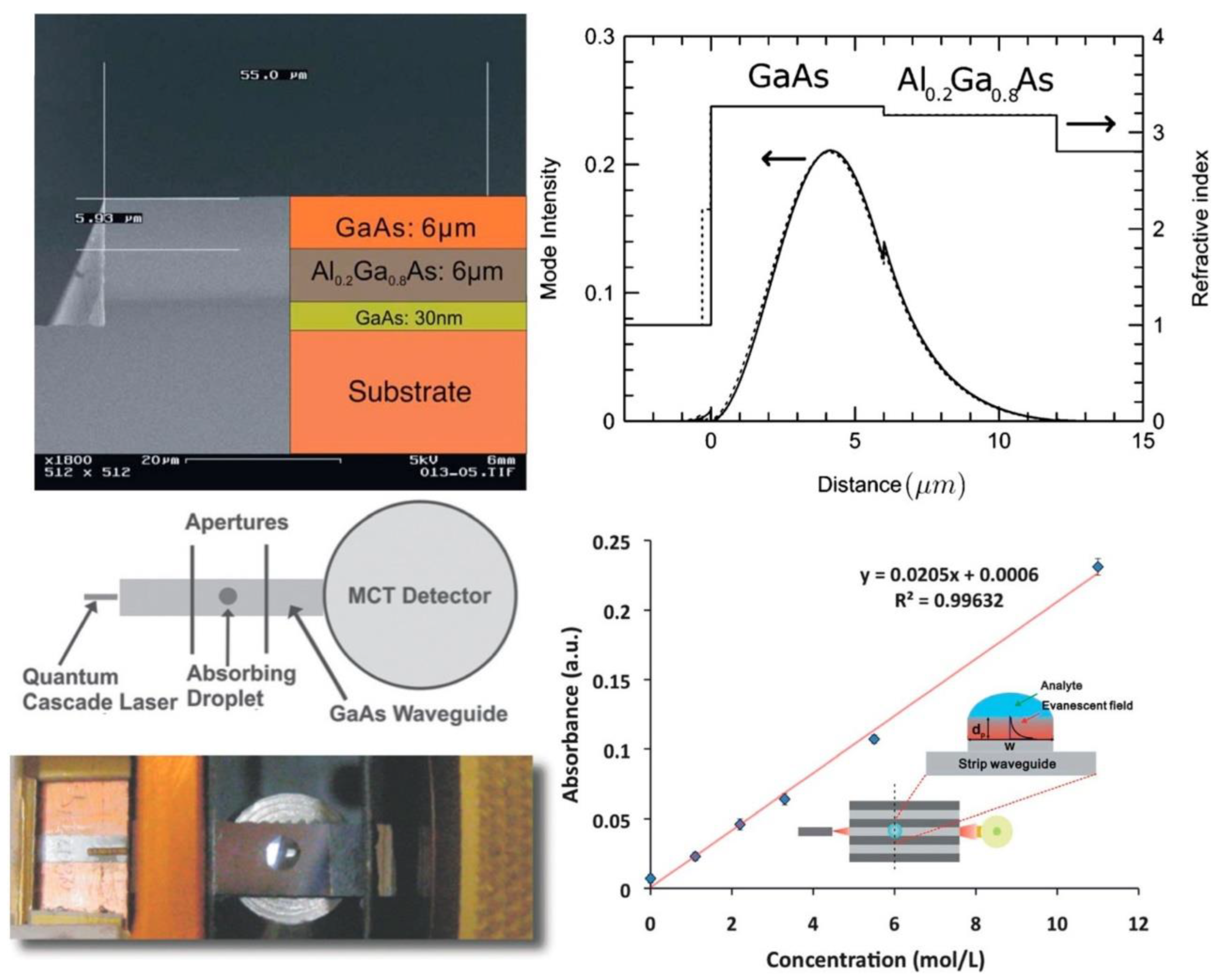
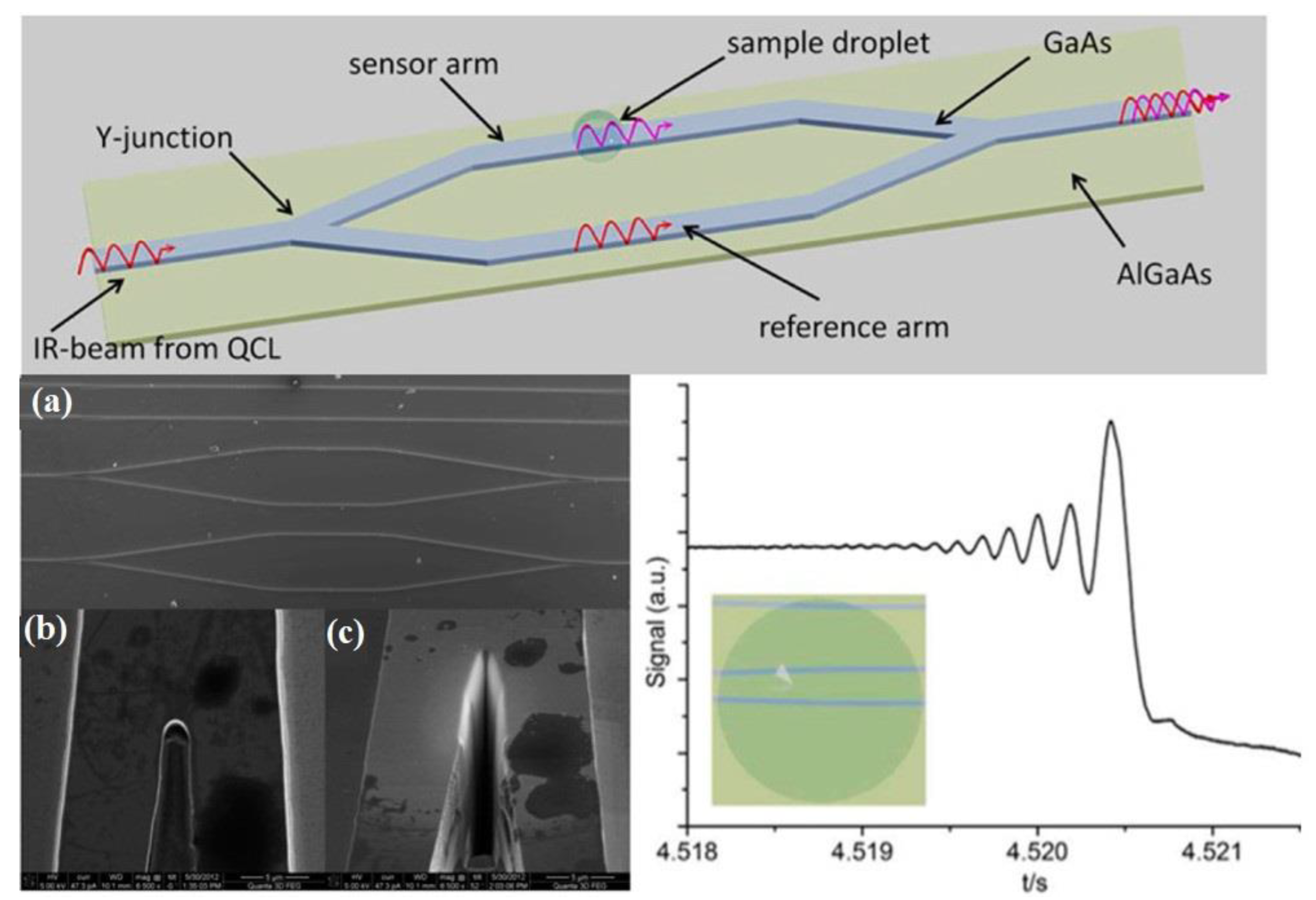
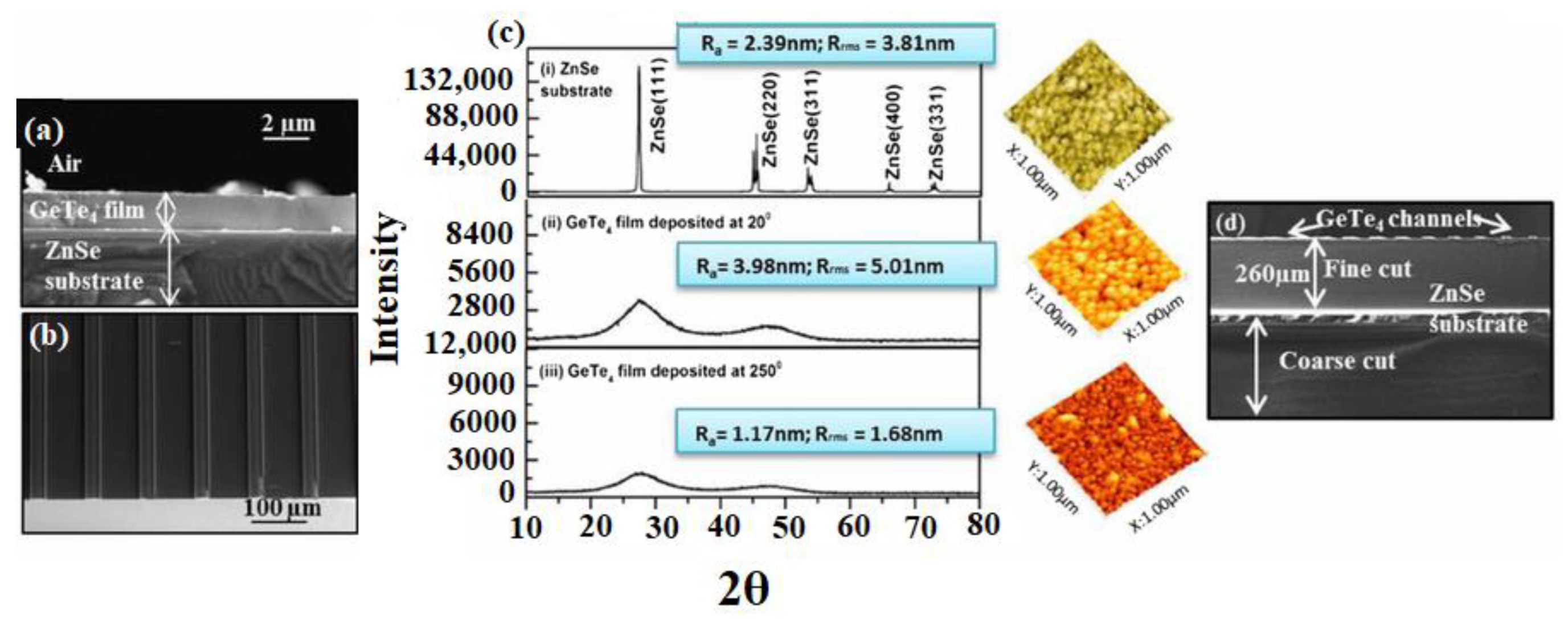
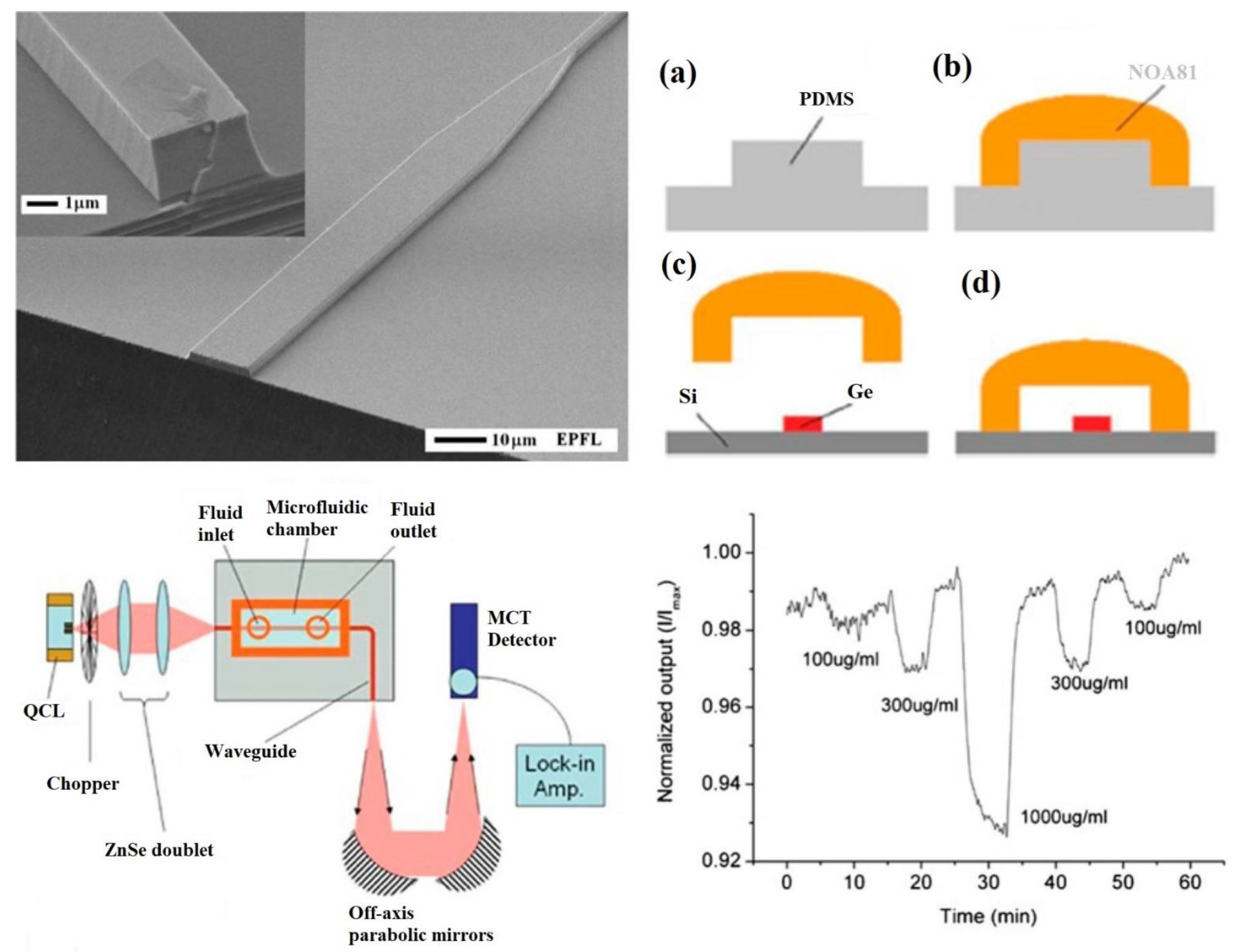
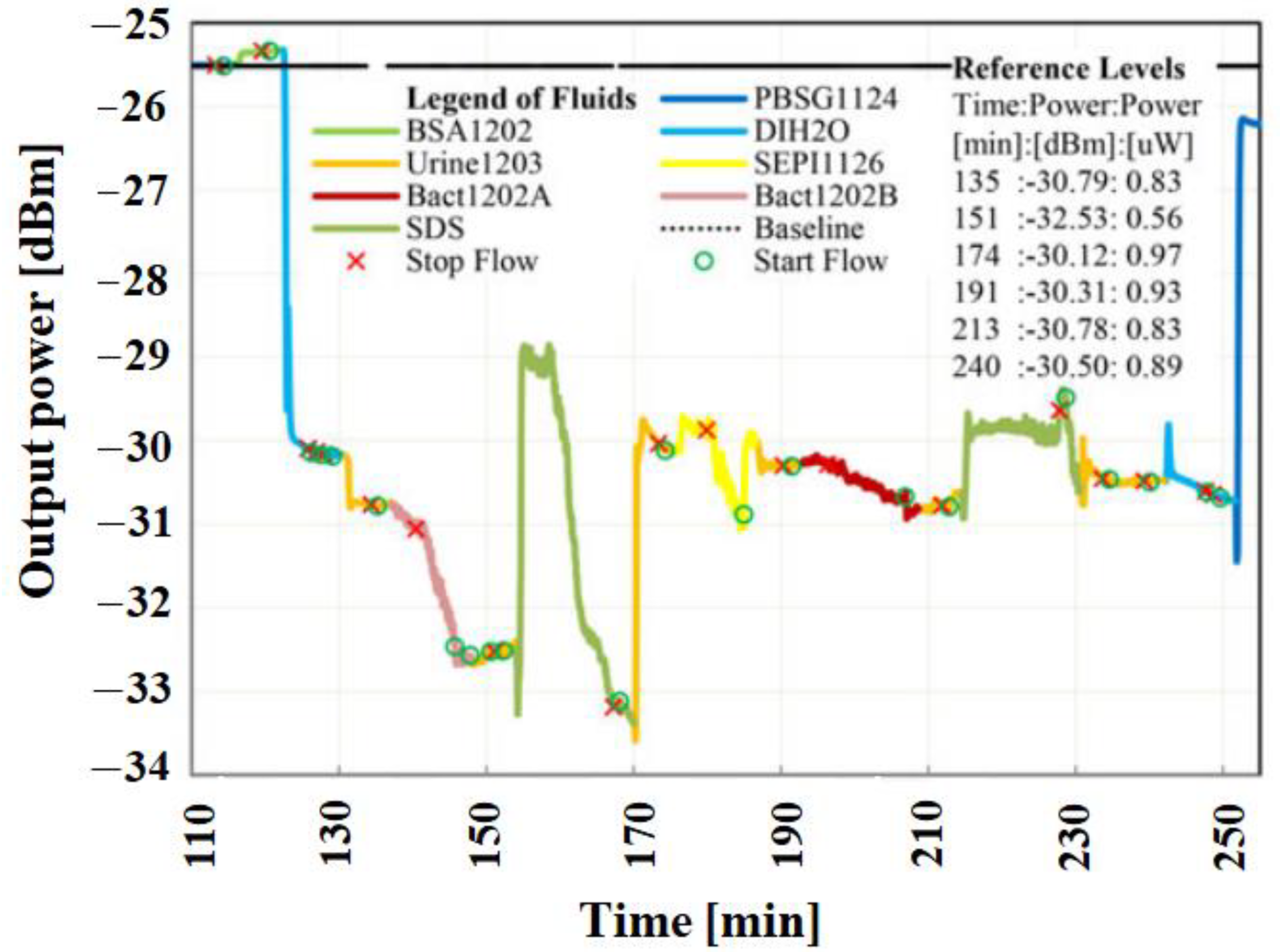
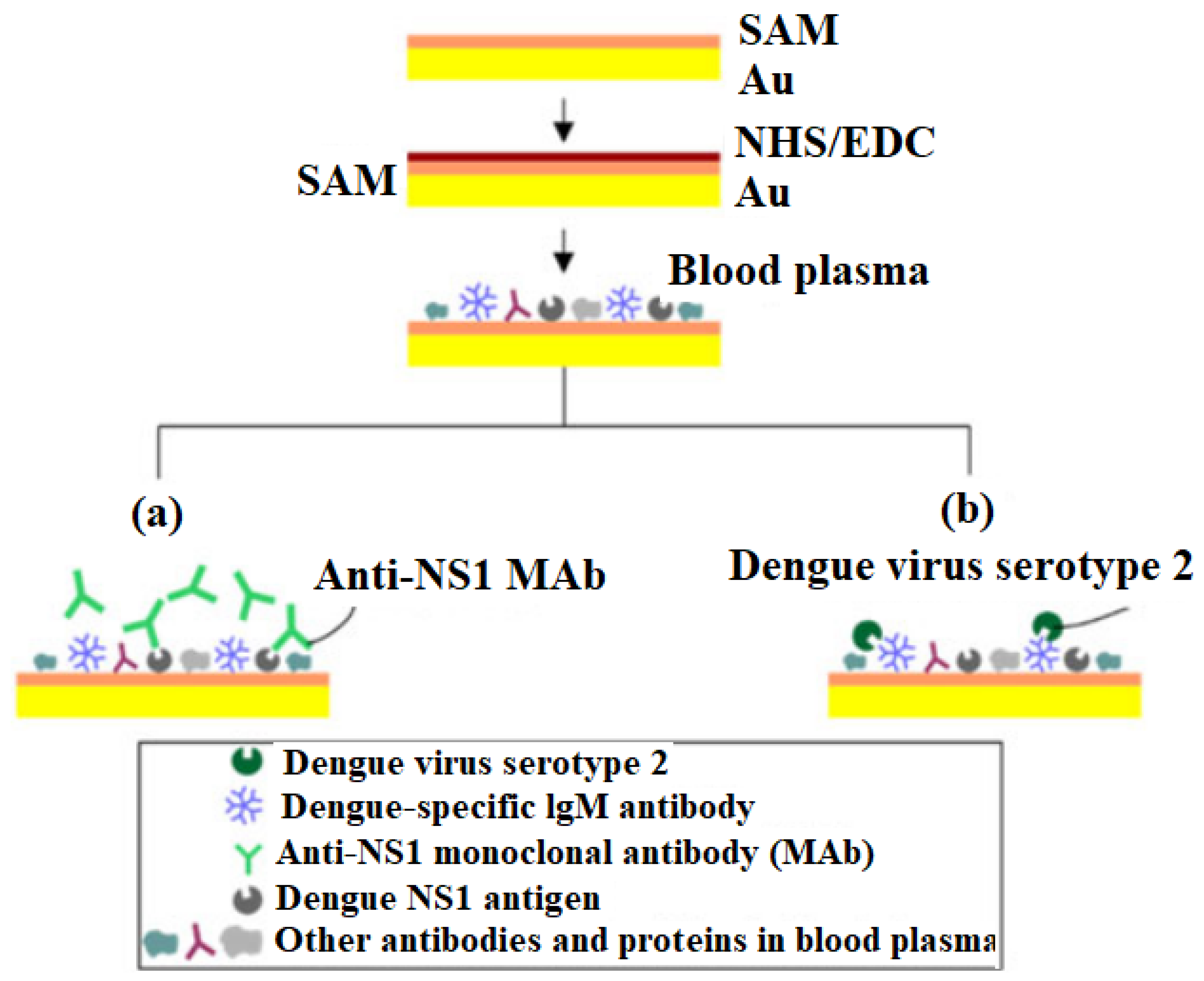


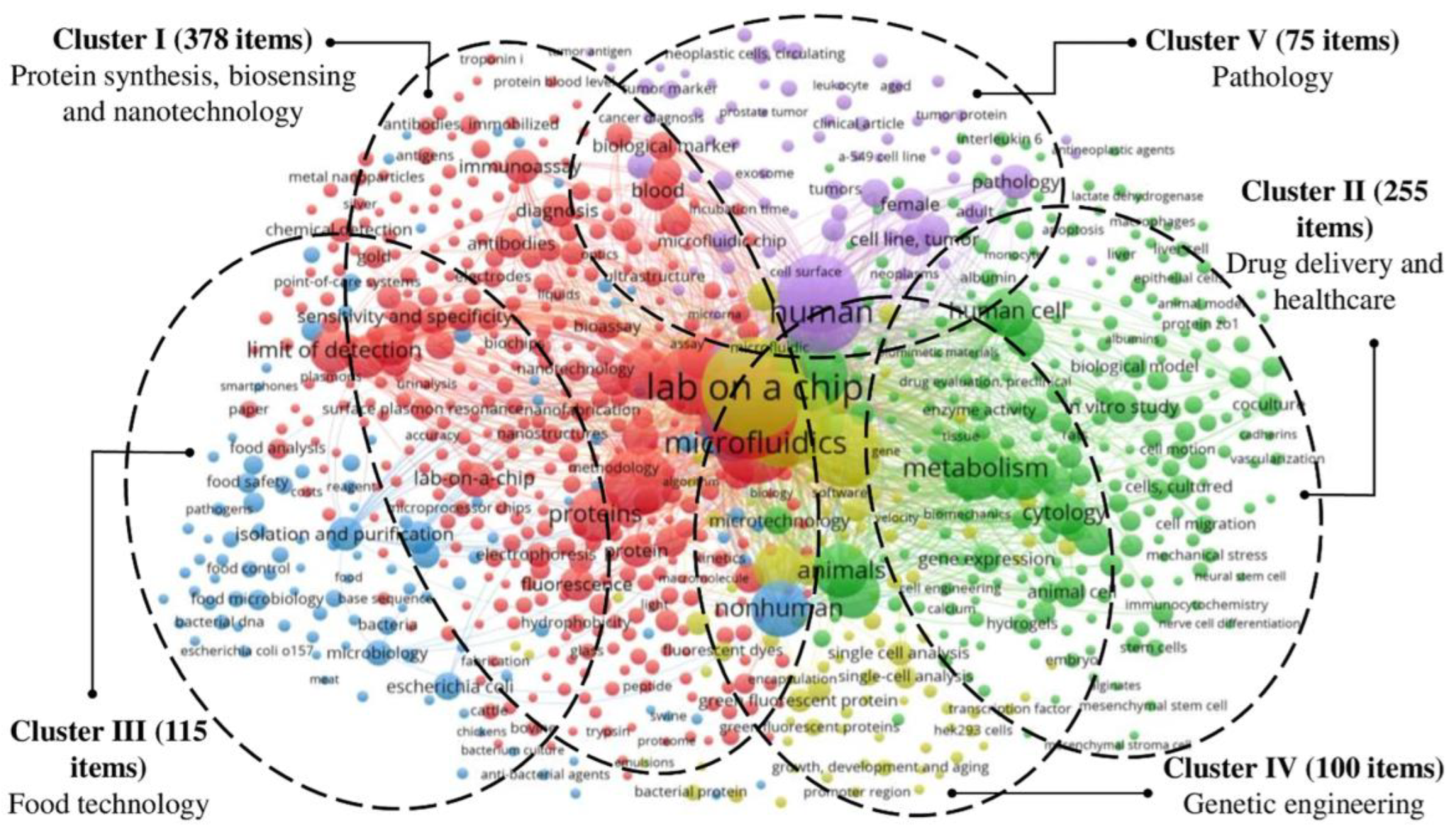
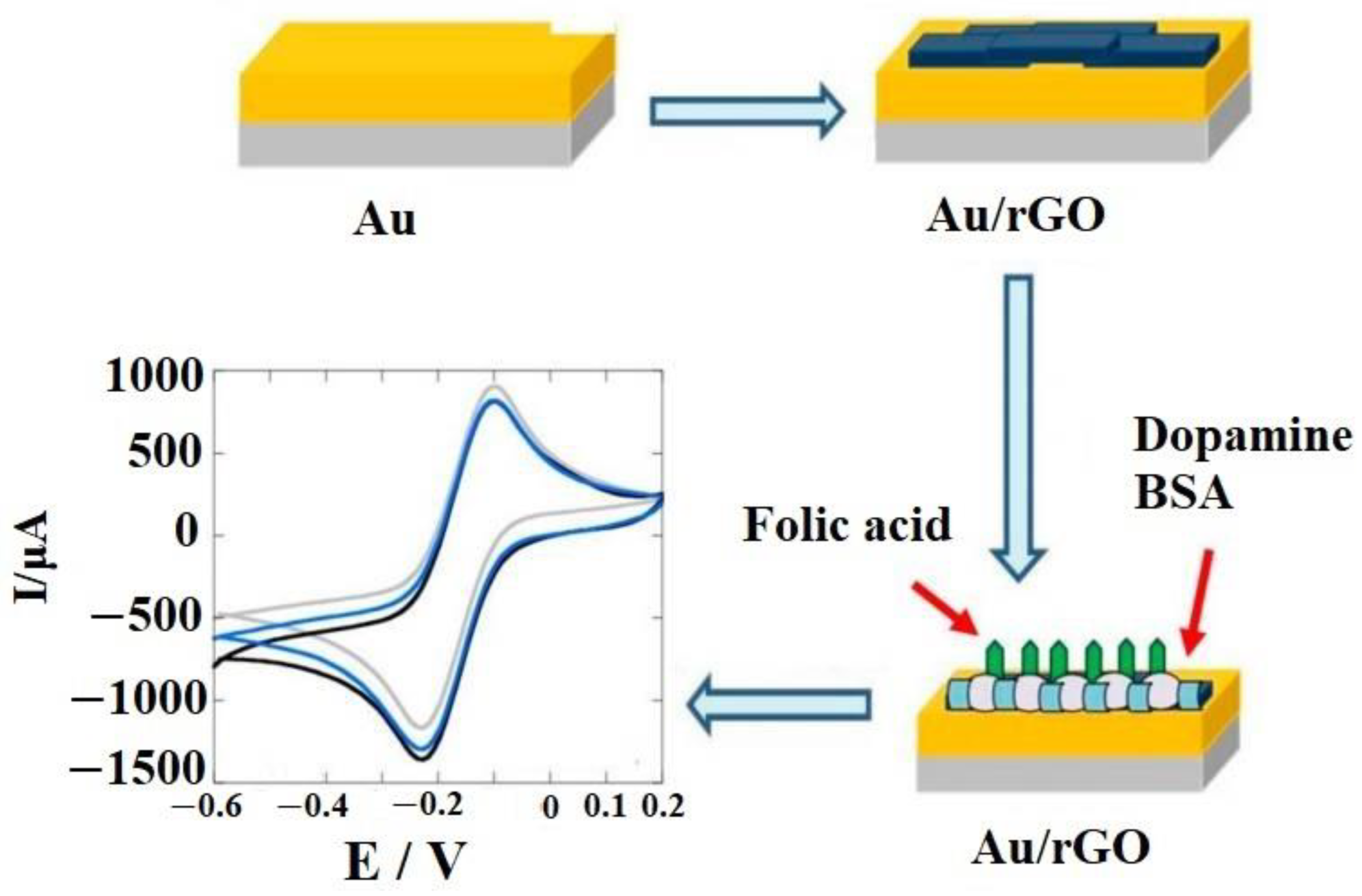
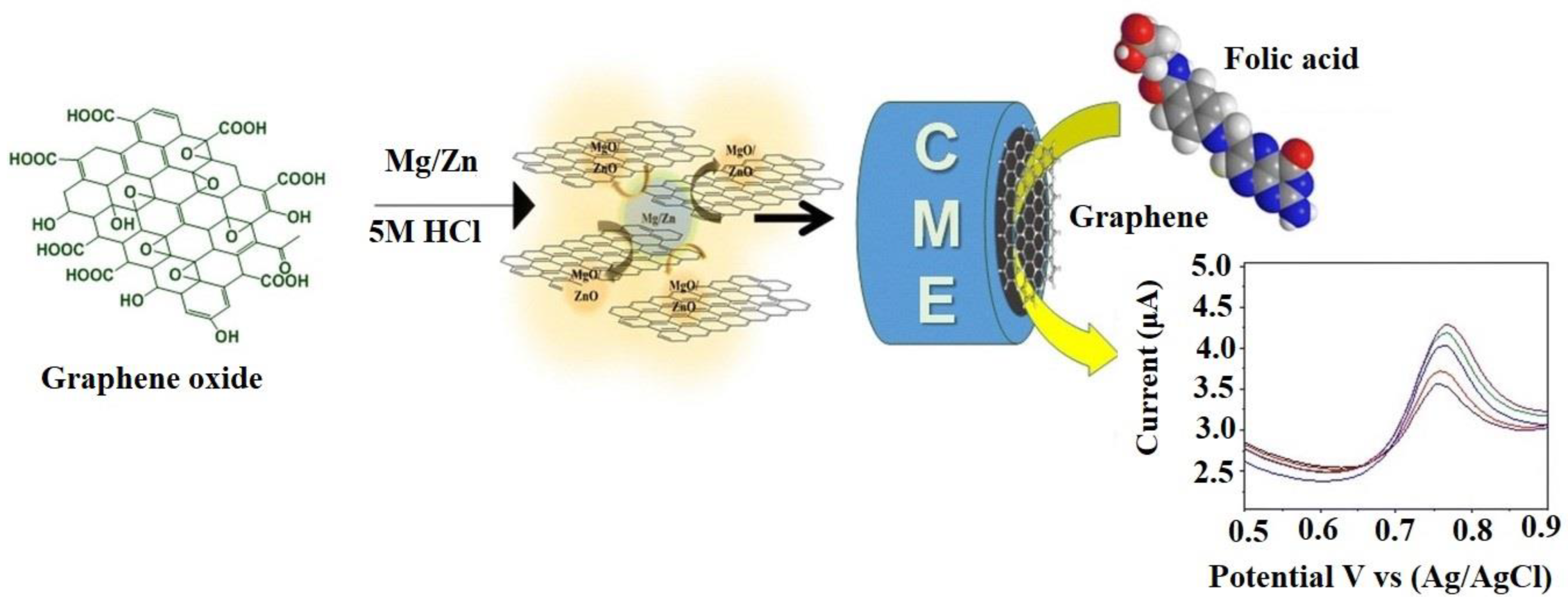
| Waveguide Material | Analyte and Volume Requirement | Refractive Index | Reference |
|---|---|---|---|
| GaAs | acetic anhydride (2 nL) | 3.3 | [17,18] |
| Si | D2O in water (35 μL) | 3.426 | [116] |
| Ge | cocaine in saliva | 4.01 | [113] |
| Si3N4 | D2O in water (35 μL) | 2.33 | [117,118] |
| Al2O3 (Sapphire) | 1.52 | [118,119] | |
| diamond | acetone in D2O (5 μL) | 2.38 | [120] |
Publisher’s Note: MDPI stays neutral with regard to jurisdictional claims in published maps and institutional affiliations. |
© 2022 by the authors. Licensee MDPI, Basel, Switzerland. This article is an open access article distributed under the terms and conditions of the Creative Commons Attribution (CC BY) license (https://creativecommons.org/licenses/by/4.0/).
Share and Cite
Kanjwal, M.A.; Ghaferi, A.A. Advanced Waveguide Based LOC Biosensors: A Minireview. Sensors 2022, 22, 5443. https://doi.org/10.3390/s22145443
Kanjwal MA, Ghaferi AA. Advanced Waveguide Based LOC Biosensors: A Minireview. Sensors. 2022; 22(14):5443. https://doi.org/10.3390/s22145443
Chicago/Turabian StyleKanjwal, Muzafar A., and Amal Al Ghaferi. 2022. "Advanced Waveguide Based LOC Biosensors: A Minireview" Sensors 22, no. 14: 5443. https://doi.org/10.3390/s22145443
APA StyleKanjwal, M. A., & Ghaferi, A. A. (2022). Advanced Waveguide Based LOC Biosensors: A Minireview. Sensors, 22(14), 5443. https://doi.org/10.3390/s22145443





